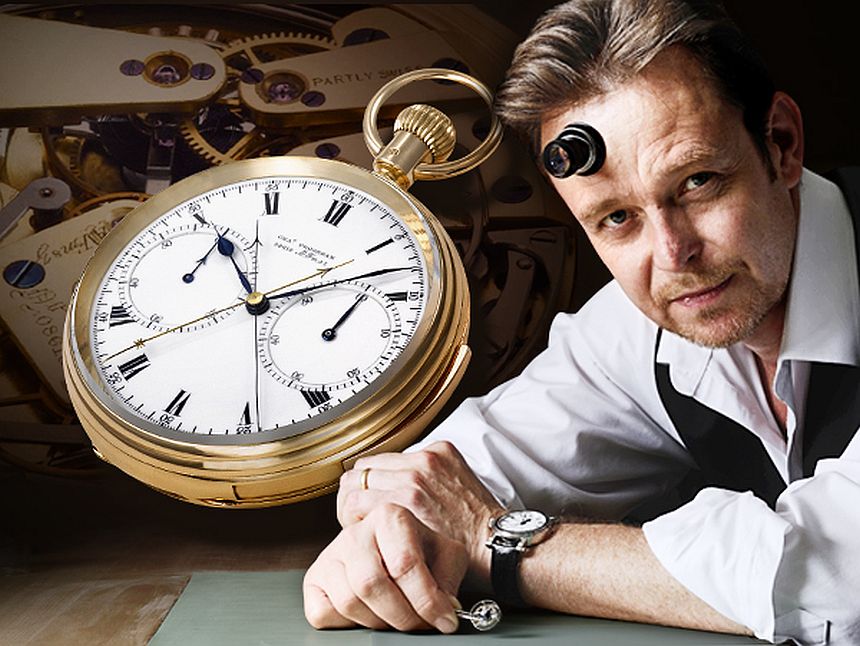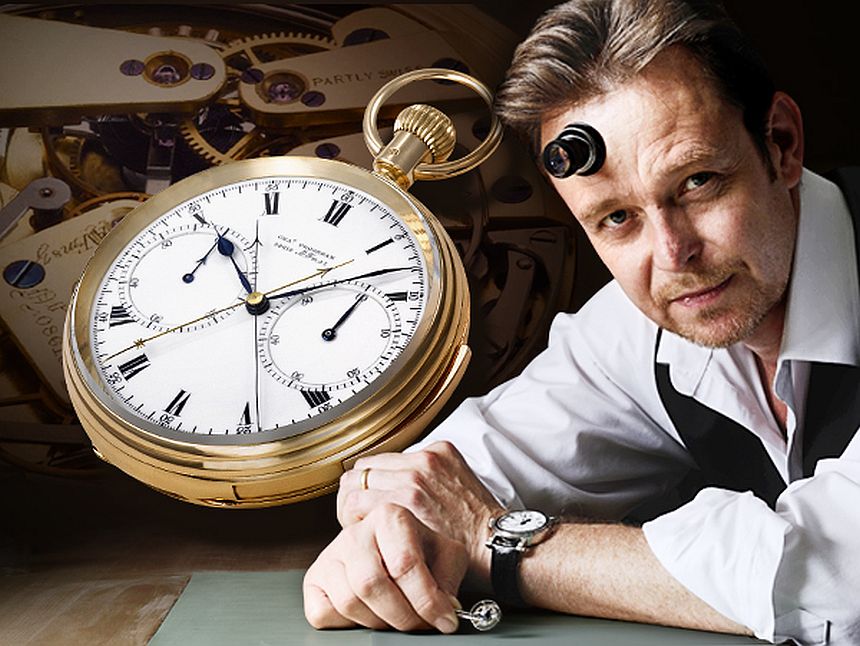
Welcome back to an original aBlogtoWatch feature, “My First Grail Watch.” In this series, we ask prominent people in the watch industry about the first timepiece that they lusted after. Today, we’re talking with Peter Speake-Marin, who started off as a restorer of antique watches, and today is the founder of his own watch brand. You’ll definitely want to read on about his grail watch. Not only does it feature a minute repeater, split-second chronograph and a tourbillon, it came into being in 1913 at the behest of none other than J.P. Morgan.
aBlogtoWatch (ABTW): Who are you, and what is your relationship to the watch industry?
Peter Speake-Marin (PSM): My name is Peter Speake-Marin, I am an English watchmaker, working in Switzerland, I began my career as watchmaker 28 years ago. Today I am on the life long journey of developing my own watches and brand.
ABTW: When did your fascination with watches start?
PSM: During my period in London’s Piccadilly when I developed a restoration workshop for antique and vintage pocket and wrist watches.
ABTW: What was your first grail watch?
PSM: During this period I worked with virtually every brand known today as well as those that have been extinct for many years; the watches I worked on were made between the 18th century until the 1950’s. I touched extraordinary pieces that were the first of their kind and influenced watchmaking design and mechanics that have formed today a billion dollar business. To chose a single watch from this period is not an easy task – however, one watch that does stick in my memory due to the impact of un-wrapping on the day that it was passed to my bench. It was a very large open faced gold pocket watch, which to this day is imprinted in my memory.
It was branded by Frodsham and the caliber was made by Nicole Nielson (more here). It was a minute repeating, split seconds chronograph with tourbillon, with an enamel dial made by Frederic Thoms. It had the substance, weight and quality that quite literally took my breath away.
It was one of 20 pieces to be made for J.P. Morgan around 1910, and one of the 12 to be given to each of his directors. The one I received was still owned by the then-90 year old daughter of one of the original directors. This was now 20 years ago, but I still remember the watch clearly.
It had a classic 3/4 plate English movement with the straight and angular levers that identified the caliber maker Nicole Nielson. Sadly at that time digital photography did not exist and my attempts to use a medium format Mamiya were a disaster, hence no photographic memory survives of this particular watch.
The reason I was sent the watch (from California where it lived) was due to a flood which had entered the vault housing the watch, resulting in some slight rusting. The owner had searched for somebody to restore to its original glory, and, after an interrogation from one of the people at JPM, it was sent to me. I had no idea what the watch actually was when it was handed to me in cardboard box wrapped in paper. When I removed the wrapping, the watch filled the palm of my hand and half the length of my fingers – closer to a small flat marine chronometer than a pocket watch. I remember feeling slightly bemused, as I had not expected to start my day quite as it had turned out.
ABTW: What drew you to this particular watch?
PSM: It encapsulated what watchmaking is for me, or at least what it became. It was well made, substantial in design and material, and the complexity was hidden under the inner dust cover so it was not in full view. It was balanced, beautiful, unassuming yet bold, and made at a time when English watchmaking still was the reference (and often to my way of thinking remains so). It was a statement to horological machining, quality and art.
ABTW: Given the relative rarity of this pocket watch, was there ever a time where you were able to own one yourself?
PSM: I could not afford to buy his watch, then or now. Even if I was able, I am not a collector – I am a member of a small group that can make this kind of watch. The passion for myself is not in ownership, it is in the freedom to explore and execute my own horological creativity and ideas. That freedom is priceless.

